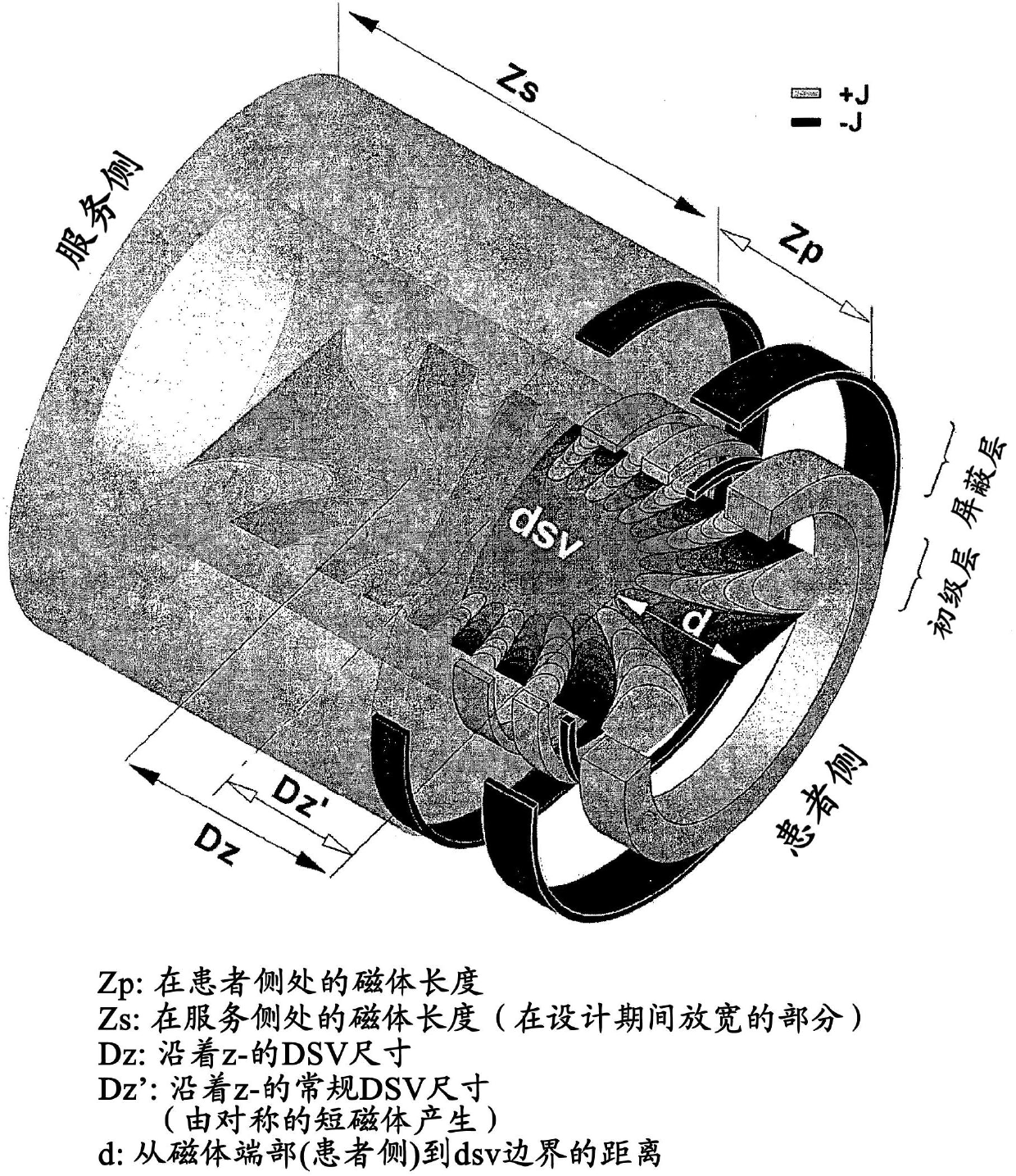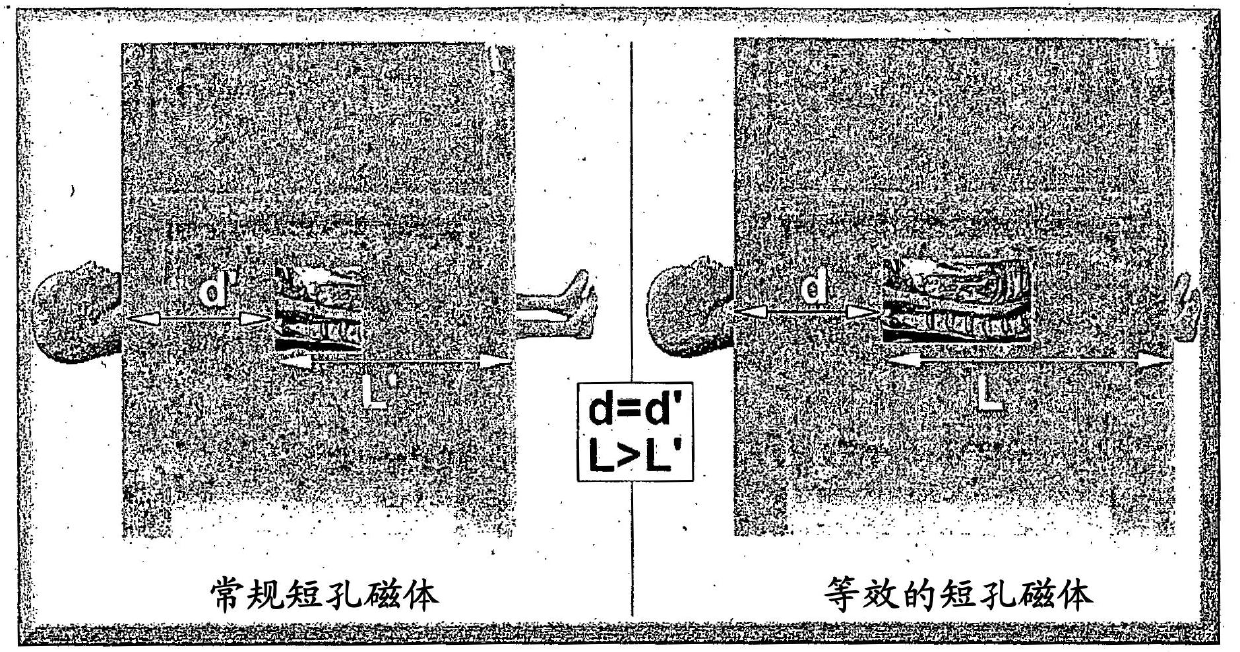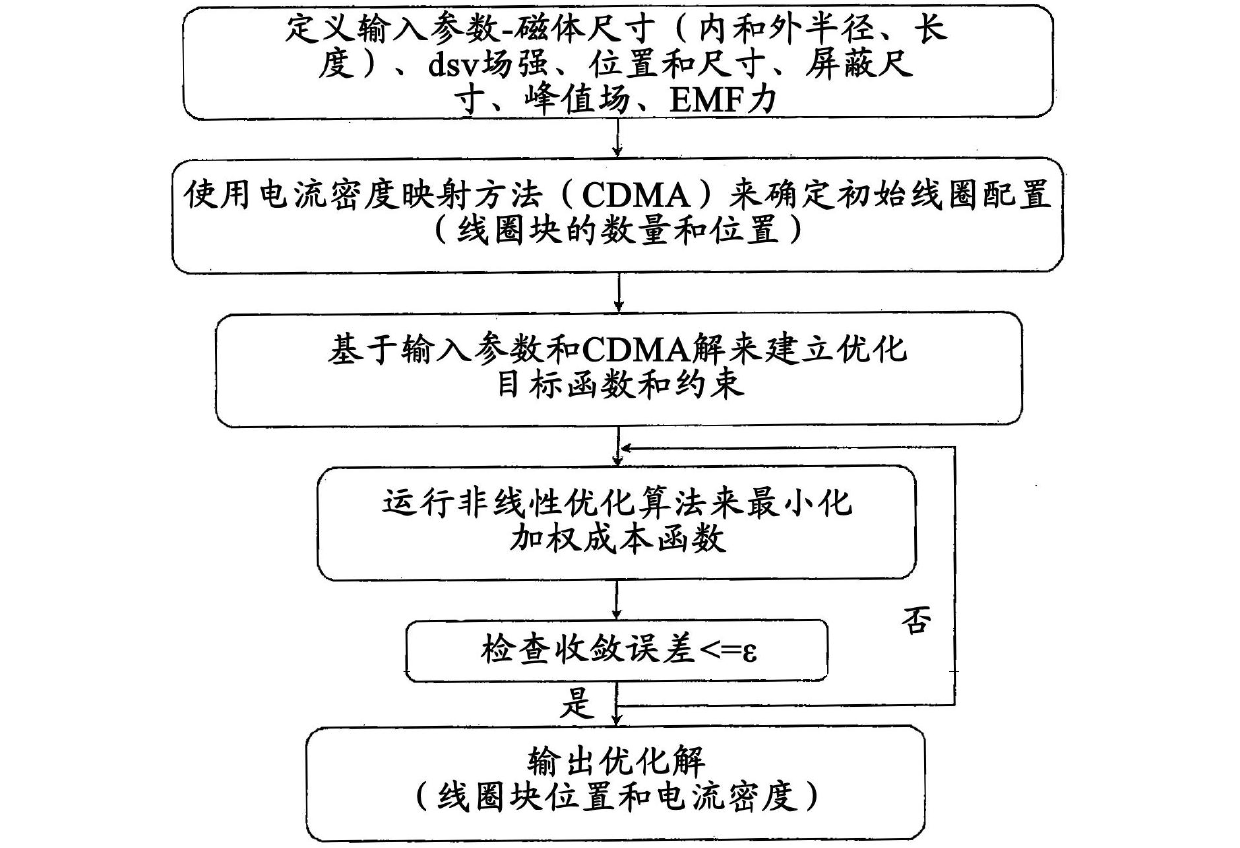Open-bore magnet for use in magnetic resonance imaging
A magnetic resonance and magnet technology, which is used in magnetic resonance measurement, magnetic objects, superconducting magnets/coils, etc., can solve the problem of inability to obtain SNR of high-field MRI systems, and achieve the effect of keeping magnets safe and cost-effective
- Summary
- Abstract
- Description
- Claims
- Application Information
AI Technical Summary
Problems solved by technology
Method used
Image
Examples
Embodiment 1
[0078] Example 1 (1.5T whole body magnet)
[0079] exist Figure 4 This example schematically shown in shows a superconducting magnet according to an embodiment of the invention. Broadly summarized, the magnet uses 13 coils and has a cold hole length and cold hole inner radius of approximately 1.34 and 0.49 meters, respectively. More importantly, the shortest distance between the cold hole magnet end and the edge of the dsv is only 0.36 m, which is difficult to achieve with other coil configurations. In this example, the axial distance between the center of the magnet and the center of the imaging is 1.2 cm. On the primary winding of the magnet, all coils are wound in the same direction (ie, have the same polarity), except for the second coil from the end. These coils are wound in the opposite direction (ie have opposite polarity) to all other coils on the primary winding.
[0080] The coil block on the primary winding has an asymmetrical electromagnetic topology with resp...
Embodiment 2
[0086] Example 2 (3T limb magnet (version a, b))
[0087] exist Figure 10 and 15 This example, schematically shown in , shows a 3T superconducting magnet design using structures according to the second and third embodiments of the invention.
[0088] Such as Figure 10 As shown, in design version "a", the coil structure is less than 55 cm in total length, while a uniform dsv is produced: 23.5 cm along the axial direction, and 7.5 cm in the radial direction, where the uniformity of the dsv is in the The change in volume is less than 5ppm. On the patient side of the primary layer, the coil next to the end coil has the opposite polarity to all other coils in the primary coil set. The six middle coils in this embodiment are located in the central region of the magnet. There is no negative coil next to the end coil on the service side. In this example, the axial distance between the center of the magnet and the center of the imaging is 1.2 cm. The coil structure again offer...
PUM
| Property | Measurement | Unit |
|---|---|---|
| length | aaaaa | aaaaa |
| length | aaaaa | aaaaa |
| length | aaaaa | aaaaa |
Abstract
Description
Claims
Application Information
 Login to View More
Login to View More - R&D
- Intellectual Property
- Life Sciences
- Materials
- Tech Scout
- Unparalleled Data Quality
- Higher Quality Content
- 60% Fewer Hallucinations
Browse by: Latest US Patents, China's latest patents, Technical Efficacy Thesaurus, Application Domain, Technology Topic, Popular Technical Reports.
© 2025 PatSnap. All rights reserved.Legal|Privacy policy|Modern Slavery Act Transparency Statement|Sitemap|About US| Contact US: help@patsnap.com



